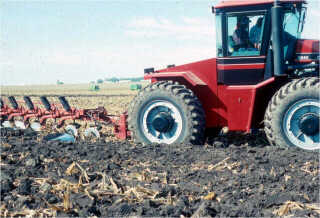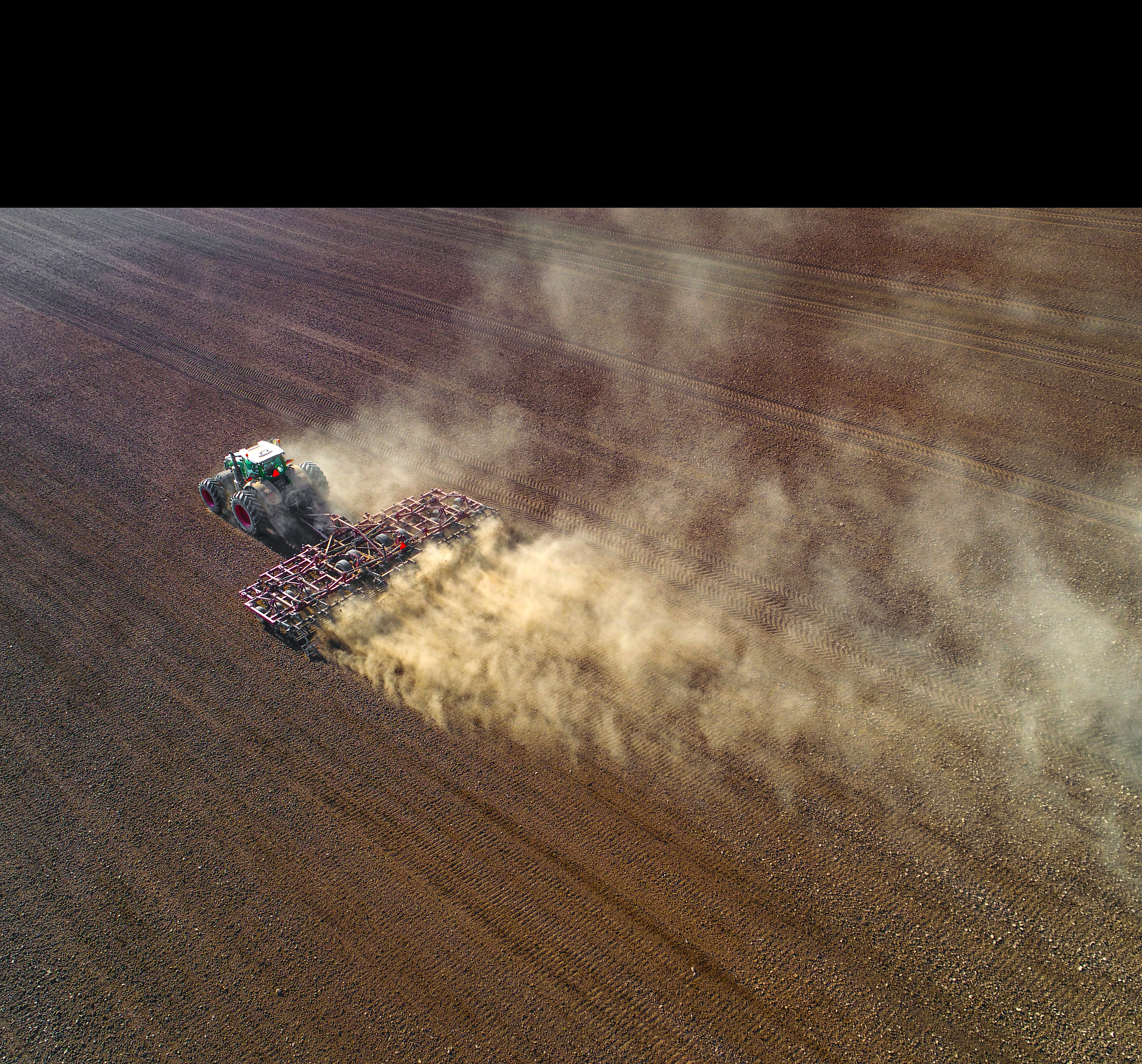
Moldboard plowing can provide soil pulverization and nearly complete burial of weed seeds and residue. Secondary tillage operations, such as disking or field cultivation, allow for uniform incorporation of fertilizers and pesticides and smoothing of the soil surface. Additionally, crop cultivation for weed control is usually practiced.
Soils that tend to be wet are well suited for a fall moldboard plow system. Plowing speeds up warming and drying of these soils, thus avoiding spring delays. Although vulnerable to erosion, wet soils are often relatively flat, thus soil loss caused by runoff may not be a major concern. With fall moldboard plowing, more time is available in the spring for additional tillage operations. However, on steeper slopes, the potential for soil erosion by water throughout the winter and spring is great because surface residue in not available to protect the soil. Likewise, in drier climates, the potential for soil erosion by wind is greater without residue cover.
Spring plowing reduces the potential for wind and water erosion throughout the winter, but the labor and time requirements in the spring can offset these advantages. Furthermore, spring plowing may produce clods, which require unplanned tillage operations to develop a seedbed. Excessive soil moisture losses, especially in dry years, is another disadvantage with spring plowing and the associated secondary tillage operations.

